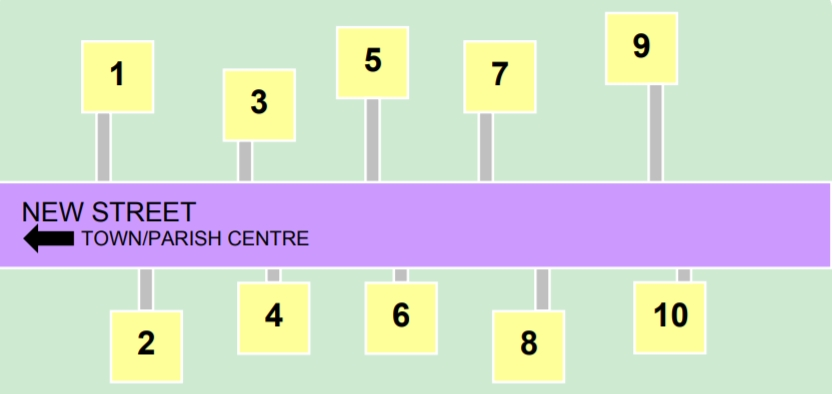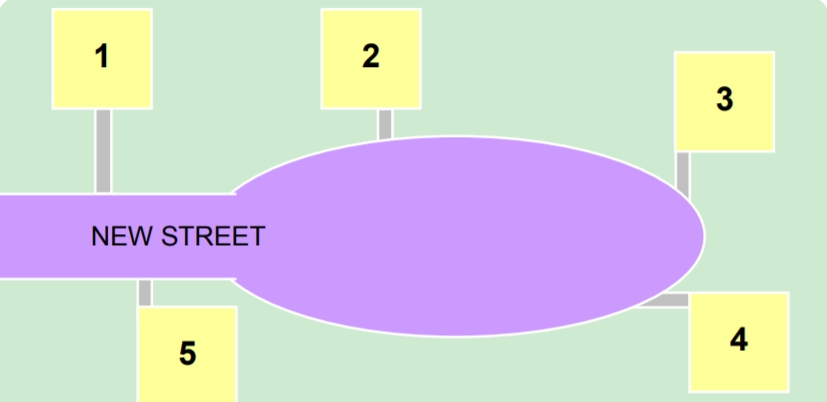Guide to numbering buildings
A new street should be numbered with even numbers on the right side and odd numbers on the left, from the main access point (Figure.1), with the exception that for a cul-de-sac consecutive numbering in a clockwise direction is preferred (Figure.2).

Figure.1 shows a plan of a street, with even numbered houses on the right hand side of the street and the odd numbered houses, on the left hand side of the street

Figure.2 shows a plan of a dead-end (cul-de-sac) street with houses numbered consecutively in a clockwise direction.
Buildings
Buildings (including those on corner sites) are to be numbered according to the street in which the main entrance is located. Alternative addresses can be held in the council address database where a property has more than one entrance, although these do not form part of the official address.
When there is infill development, for example, a large old house between two other houses is demolished and replaced by four smaller houses, it is not always possible to use the next number in a sequence. In these cases each new house shall be given the number of the old house with either A; B; C or D, or a terrace name applied.
Multiple flats
Where multiple flats are accessed from a single entrance they will be numbered in the following form: flat number, building number, street. For example Flat 2, 21 Smith Street and not 21B Smith Street, which might already be used by an adjoining infill building or be required later on. For larger developments the buildings can be named.
Internal flats
All internal flat numbers should start with flat 1 at the lowest unit of the building and number upwards in a clockwise direction from the entrance.
Renumbering an existing building(s)
The council has powers under the London Building Acts (Amendment) Act 1939-Part II, to renumber any building(s), but we normally only consider a request to renumber an existing building(s) when the address is likely to cause problems for the occupiers, emergency services, Royal Mail or other delivery companies.
In the event of a third party submitting a request to change the number of an existing building(s), we would seek approval from 80% of freeholders impacted.
In all cases we would hold a 30 day consultation with the people affected and the emergency services. However, all associated costs with deeds and land registry changes are to be met by the customer.